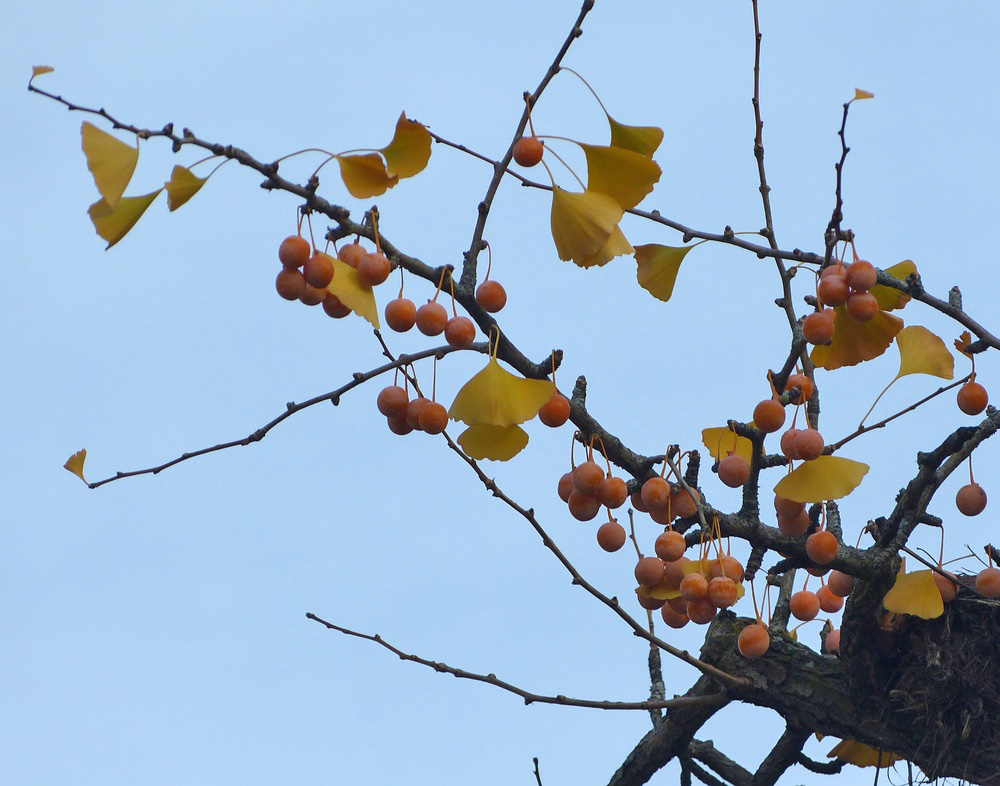The Plant Collections Network (PCN) of the American Public Gardens Association recently bestowed national accreditation status to two genera in the Arnold Arboretum’s collections: Forsythia and Ginkgo. Along with six previously recognized genera—Acer (maple), Carya (hickory), Fagus (beech), Stewartia, Syringa (lilac), and Tsuga (hemlock)—the Arboretum’s eight national collections represent some of the most diverse, well documented, and widely-studied collections of their kind.

“The Arnold Arboretum is one of the great museums of the world. And while there are no paintings, sculptures, or archaeological objects, the 15,000 accessioned living objects—namely our trees, shrubs, and lianas—constitute an extraordinary set of curated holdings,” said William (Ned) Friedman, Arnold Professor of Organismic and Evolutionary Biology and director of the Arnold Arboretum of Harvard University. Like every museum, the Arnold Arboretum never stops collecting and aspiring to acquire new objects to make its core holdings even stronger—from both horticultural and botanical perspectives.
“As the Arnold Arboretum has emerged as one of the most active botanical gardens in the world collecting in the wild, we have been able to boost some of our key genera,” he continued. “In this case, our Ginkgo and Forsythia collections are now recognized as the preeminent holdings of these plant groups in North America.”
PCN is a longstanding collaboration between the American Public Gardens Association and the USDA-Agricultural Research Service. The program recognizes exemplary collections that serve critical conservation and research needs. Collections are awarded status following the preparation and submission of a lengthy application and peer review process. Genera considered for accreditation must be maintained at the highest horticultural, arboricultural, and curatorial standards, and qualifying institutions must also demonstrate a long-term commitment to their care and management.
Pam Allenstein, Plant Collections Network manager, said the Arnold Arboretum is exemplary among public gardens in actively curating well-documented plant collections. “Its commitment to excellence, research, and forward planning has been recognized by our association’s Plant Collections Network and is to be commended on stewarding eight nationally accredited plant collections,” she said.

Michael Dosmann, keeper of the Living Collections at the Arboretum, said it’s an honor to see these two collections recognized by the PCN.
“There are people in the Americas who are thinking and acting in ways for plant conservation, creating a system to promote collection and improve curatorial practices for the greater good,” he said.
Dosmann recognizes the Ginkgo collection is in part, due to Peter Del Tredici, senior research scientist emeritus at the Arboretum, who acquired numerous representatives from wild refugia (locations which support an isolated or relict population of once widespread species).
“Because of Peter’s work, the Arboretum’s Ginkgo collection is one of the most important conservation collections of its kind, anywhere,” he said. Ginkgo comprises just a single species, Ginkgo biloba. Related to conifers, it is known for its fan-shaped leaves and odoriferous seeds. Despite being commonplace in cultivation, it is represented in the wild by just a handful of populations in China.
Living Collections Fellow, Terry Huang, who oversaw the PCN application and evaluation process, said the Ginkgo collection at the Arnold Arboretum contains the most individuals of documented wild origin, and presumably the most genetic diversity in any garden in North America.
“The Arnold Arboretum holds the largest collection of Ginkgo from the two regions researchers believe harbor wild or relict populations—Tianmu Shan in eastern China and the mountains of southwestern China,” he said. “This collection showcases morphological range of Ginkgo and the preservation of its genetic diversity.”
The Arboretum also has a long history of growing Forsythia, and has one of the most diverse, species-rich collections on Earth, according to Dosmann. These hardy shrubs are grown for their bold display of yellow flowers in spring and were first introduced to the U.S. more than 180 years ago.
“We hold numerous wild-collected accessions as well as original cultivars developed here in the early twentieth century by Karl Sax,” he said. Sax, director of the Arboretum from 1947 to 1954, developed cultivars of Forsythia, as well as Malus (apples), Magnolia, and Prunus (cherries).
The Forsythia collection at the Arnold Arboretum holds the most comprehensive collection of Forsythia species in North America, Huang added, as well as historical hybrids and cultivars developed and first introduced by the Arboretum.
“This collection can be used by researchers to help untangle the taxonomy of the genus,” he said, “As its stewards, the Arboretum can help ensure that the diversity and long horticultural history of Forsythia will not be forgotten.”
Additional resources:
Dosmann, M.S. 2017. Planned, documented, and shared: Plant Collections Network’s next chapter. The Public Garden 32(Special Issue):30.
Dosmann, M., P. Del Tredici, and E. Hsu. 2007. The Arnold Arboretum Sextet: NAPCC Collection Profile. The Public Garden 21(2):40–43.
From “free” to “friend”…
Established in 1911 as the Bulletin of Popular Information, Arnoldia has long been a definitive forum for conversations about temperate woody plants and their landscapes. In 2022, we rolled out a new vision for the magazine as a vigorous forum for tales of plant exploration, behind-the-scenes glimpses of botanical research, and deep dives into the history of gardens, landscapes, and science. The new Arnoldia includes poetry, visual art, and literary essays, following the human imagination wherever it entangles with trees.
It takes resources to gather and nurture these new voices, and we depend on the support of our member-subscribers to make it possible. But membership means more: by becoming a member of the Arnold Arboretum, you help to keep our collection vibrant and our research and educational mission active. Through the pages of Arnoldia, you can take part in the life of this free-to-all landscape whether you live next door or an ocean away.
